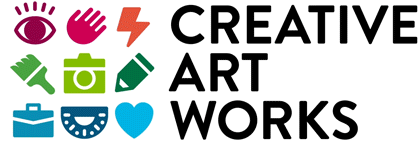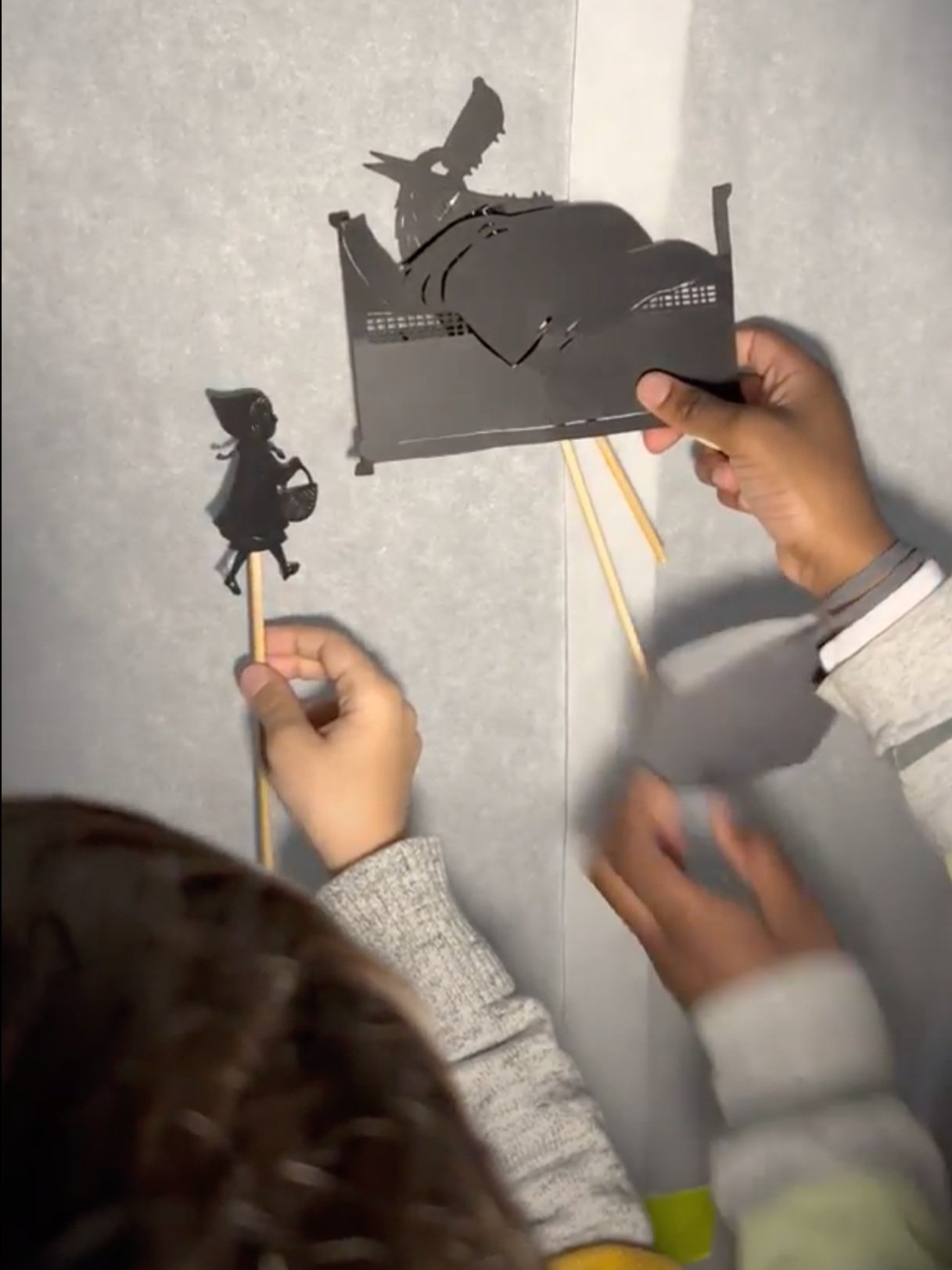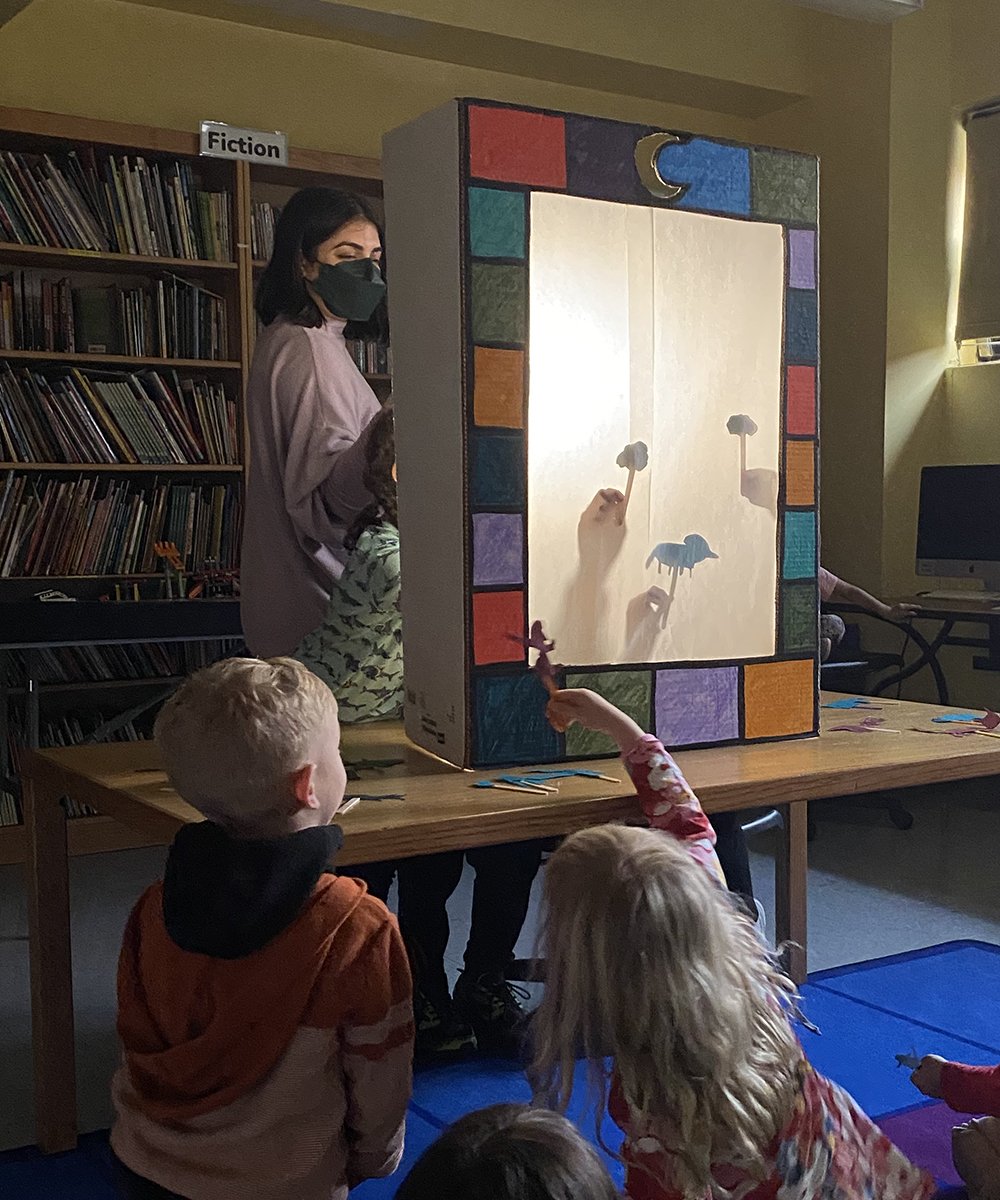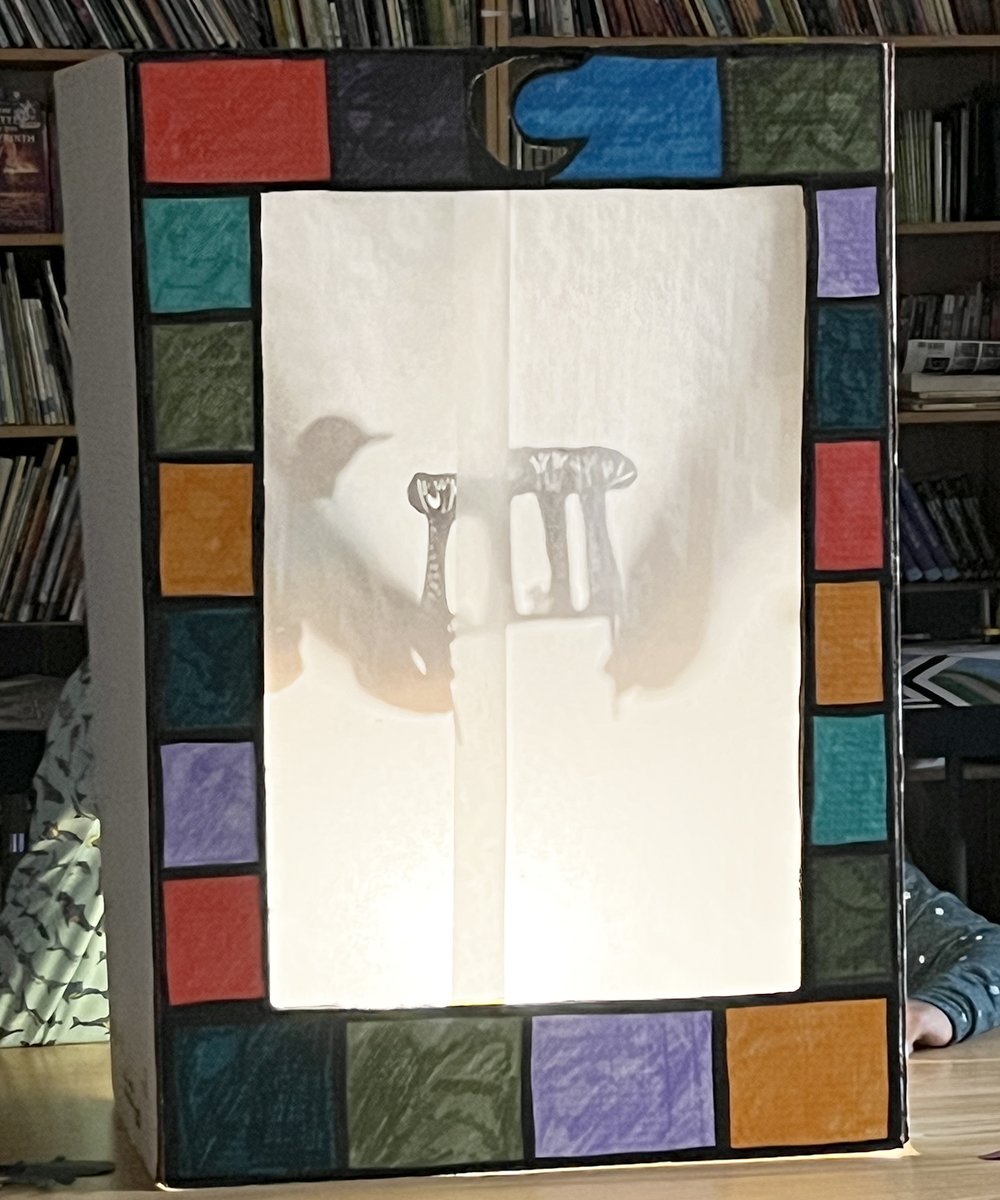In Conversation with very young storytellers
Making friends. A student in CAW’s Visual Storytelling and Puppetry program at the William Lynch School in Hamilton Heights
“Storytelling, without fail, is something that intrigues and excites everyone. It’s how we learn to communicate, process our emotions, imagine, and create. Learning to express these stories, and being given access to the space to do so, is so important, especially for students. It’s a way to show them that they are seen and heard, that their words matter, and that their stories matter.”
Student with stick puppet
Starting a dialogue
Creative Art Works Visual Storytelling and Puppetry program at the William Lynch School in Hamilton Heights has got a lot of people talking. This program, which is part of the NY City Council’s Cultural After-School Adventures (CASA) initiative, introduces primary-school students to the surprisingly sophisticated art of puppetry. Young creators try their hands at making increasingly complex forms of puppets, including stick puppets, paper plate puppets, paper bag puppets, sock puppets, and marionettes. Along the way they learn the basic building blocks of stories, such as character, conflict, setting, plot, and, of course, dialogue. The program will culminate with a grand puppet show with performances by all students on stages built by each grade expressly for the final event.
Students naturally enjoy talking to their own puppets, or staging conversation between their puppets and those of their classmates. It’s fun, but it’s also a vehicle for tremendous growth. To find out more, we talked to CAW Teaching Artist Maham Khwaja about this program and the enduring appeal of telling stories with puppets.
A student cuts felt shapes to apply to her sock puppet
How did you become interested in puppetry both as a craft and as performance?
Maham: I loved puppets as a child. Sesame Street was one of the shows I watched regularly as a young kid in Pakistan, and when my family moved to America, it was a source of comfort. As I grew up, I began writing stories and poetry, and then turned my attention to filmmaking, where I found the opportunity to physically create characters, some of which were puppets. And that’s when everything fell into place.
Why do young kids respond so strongly to puppets?
Maham: I think it’s because puppets are so tactile, interactive, and expressive – young kids are instantly drawn to them. Not only can they watch puppets tell engaging stories, but they can also be a part of those stories, and even create their own stories using their own puppets.
CAW Teaching Artist Maham Khwaja
What skills or competencies are your students learning by making puppets to tell their own stories?
Maham: The students have been learning so much! They’re learning to physically create puppets, as well as learning to think about their characters, in terms of personality, likes and dislikes. From there, they’ll be learning to give their characters words, scenarios and stories. We’re building stories from the ground up and the students, beyond being able to express themselves artistically, are learning to imagine and create using characters that they’ve made themselves.
Tell us about the process of creating characters and putting them into narratives?
Maham: We begin by naming our puppet characters. Then, we give them personalities and think about how they respond to things in their world. At this point in the program, we’re beginning to give our characters scenarios in which they can express themselves and engage with one another. Soon, the dialogue and conversations will be part of greater stories created by the students themselves. Dialogue and conversation can, often times, be an extension of what a particular student may be feeling or thinking at any given moment. It can also be a way for a student to try out and explore something new that they’re curious about.
A Dialogue of Ideas
Students are in constant dialogue with each other — they pay attention to what their peers are creating and often riff on each other’s ideas, as in a bank robbery scene by one student that showed up on the T.V. in another student’s set. (Note the detail of the cactus.)
A bank robbery scene created by one student…
…shows up on the T.V. in another student’s set.
How does it feel to be a rocket ship?
“One of my students wanted to make a rocket ship for their puppet character. I asked the student to think about what kind of emotions a rocket ship might feel, and they responded, ‘Happy and excited!’”
A “happy and excited” rocket ship
Stick Puppets and Sets
Paper Bag Puppets
Shadow Puppets
This program is supported, in part, by public funds from the New York City Department of Cultural Affairs through the Cultural After School Adventures (CASA) initiative, in partnership with the City Council and Council Member Shaun Abreu.





































